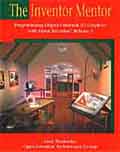Select Books on OpenGL and 3D Graphics Coding
OpenGL Reference Standards
- The OpenGL Shading Language 2nd Edition
- OpenGL Extensions Guide
- OpenGL Reference Manual: The Official Reference Document to OpenGL, Version 1.4
- The OpenGL Programming Guide: The Official Guide to Learning OpenGL Version 2
Books about OpenGL
- OpenGL Distilled
- 3D Computer Graphics : A Mathematical Introduction with OpenGL
- Computer Graphics with OpenGL (3rd Edition)
- ShaderX3: Advanced Rendering with DirectX and OpenGL
- Beginning OpenGL Game Programming
- OpenGL : A Primer (2nd Edition)
- Open Geometry: OpenGL + Advanced Geometry
- OpenGL Programming for Windows 95 and Windows NT
- Advanced Graphics Programming Using OpenGL
- Delphi Developer's Guide to OpenGL
- Programming OpenGL for the X Window System
- Computer Graphics Using OpenGL (2nd Edition)
- Interactive Computer Graphics: A Top-Down Approach with OpenGL (3rd Edition)
- OpenGL SuperBible 3rd Edition
Books about 3D graphics with OpenGL information/focus
- Linux 3D Graphics Programming
- Game Programming Gems - Vol 1-5
- GPU Gems 2 : Techniques for High-Performance Graphics & General-Purpose Computation
- Linux Game Programming w/CD
- Advanced Linux 3D Graphics Programming (With CD-ROM)
- Non-Photorealistic Rendering
- The Cg Tutorial: The Definitive Guide to Programmable Real-Time Graphics
- Real-Time Rendering (2nd Edition)
Books about Open Inventor
- The Inventor Toolmaker : Extending Open Inventor, Release 2
- The Inventor Mentor : Programming Object-Oriented 3D Graphics with Open Inventor, Release 2
OpenGL Reference Standards
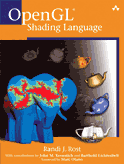
The OpenGL Shading Language 2nd Edition
Buy through Amazon OpenGL Shading Language, 2nd Edition, extensively updated for OpenGL 2.0, is the experienced application programmer's guide to writing shaders. Part reference, part tutorial, this book thoroughly explains the shift from fixed-functionality graphics hardware to the new era of programmable graphics hardware and the additions to the OpenGL API that support this programmability. With OpenGL and shaders written in the OpenGL Shading Language, applications can perform better, achieving stunning graphics effects by using the capabilities of both the visual processing unit and the central processing unit. New chapters that discuss lighting, shadows, and surface characteristics; and an under-the-hood look at the implementation of RealWorldz, the most ambitious GLSL application to date. The second edition also features 18 extensive new examples of shaders and their underlying algorithms
OpenGL Extensions Guide
Buy through Amazon The OpenGL Extensions Guide provides this much needed resource and concentrates specifically on the extensions most important to developing modern 3D games. The book is laid out in an intuitive fashion, discussing groups of extensions that modify or augment similar components of the base OpenGL architecture.Includes a companion CD-ROM with official extension specifications, presentations covering vendor-specific extensions, and sample code demonstrating usage of vendor-specific extensions.
OpenGL Reference Manual: The Official Reference Document to OpenGL, Version 1.4
Buy through Amazon Officially sanctioned by the OpenGL Architecture Review Board (ARB), the OpenGL Reference Manual, Fourth Edition, is the comprehensive and definitive documentation of all OpenGL functions. This fourth edition covers OpenGL Version 1.3 and 1.4, including cube-mapped texture mapping, multitexturing, multisampled antialiasing, depth texturing & shadows and advanced texture application modes. In addition, this book documents the routines in the OpenGL Utility Library (GLU 1.3) and added functionality in the OpenGL extension to the X Window System (GLX 1.3).
The OpenGL Programming Guide: The Official Guide to Learning OpenGL Version 2
Buy through Amazon The OpenGL Programming Guide, Fifth Edition, provides definitive and comprehensive information on OpenGL and the OpenGL Utility Library. The previous edition covered OpenGL through Version 1.3 and 1.4. This fifth edition of the best-selling "red book" describes the latest features of OpenGL Versions 1.5 and 2.0, including the introduction of the OpenGL Shading Language. You will find clear explanations of OpenGL functionality and many basic computer graphics techniques, such as building and rendering 3D models; interactively viewing objects from different perspective points; and using shading, lighting, and texturing effects for greater realism. In addition, this book provides in-depth coverage of advanced techniques, including texture mapping, antialiasing, fog and atmospheric effects, NURBS, image processing, and more. The text also explores other key topics such as enhancing performance, OpenGL extensions, and cross-platform techniques. This fifth edition has been extensively updated to include the newest features of OpenGL, versions 1.5 and 2.0, including: Storage of vertex arrays in buffer objects , Occlusion queries, Multiple render targets, Non-power-of-two textures, Point sprites, Separate stencil operations. Most importantly, this edition covers the OpenGL Shading Language specifications and explains the mechanics of using this new language to create complex graphics effects and boost the computational power of OpenGL.Books about OpenGL

OpenGL Distilled
Buy through AmazonOpenGL Distilled provides the fundamental information you need to start programming 3D graphics, from setting up an OpenGL development environment to creating realistic textures and shadows. Written in an engaging, easy-to-follow style, this book makes it easy to find the information you’re looking for. You’ll quickly learn the essential and most-often-used features of OpenGL 2.0, along with the best coding practices and troubleshooting tips

3D Computer Graphics : A Mathematical Introduction with OpenGL
Buy through Amazon This introduction to 3D computer graphics emphasizes fundamentals and the mathematics underlying computer graphics, while also covering programming techniques using OpenGL, a platform-independent graphics programming environment. The minimal prerequisites make it suitable for self-study or for use as an advanced undergraduate or introductory graduate text as the author leads step-by-step from the basics of transformations to advanced topics such as animations and kinematics.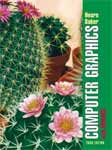
Computer Graphics with OpenGL (3rd Edition)
Buy through Amazon This new edition is a complete revision, bringing the text up to date with current advances in computer graphics technology and applications. Assuming readers have no prior familiarity with computer graphics, the authors—both authorities in their field—present basic principles for design, use, and understanding of computer graphics systems using their well-known, and accessible writing style. It includes an exploration of GL, PHIGS, PHIGS+, GKS and other graphics libraries and covers topics such as distributed ray tracing, radiosity, physically based modeling, particle systems, and visualization techniques. For professionals in any area of computer graphics: CAD, Animation, Software Design, etc.
ShaderX3: Advanced Rendering with DirectX and OpenGL
Buy through Amazon This all-new collection is packed with insightful new techniques, innovative approaches to common problems, and practical tools and tricks that will help you in all areas of shader programming. All of the articles evolved from the work and experiences of industry pros, and all of the sections were edited by shader programming experts. With the rapid advances in DirectX, OpenGL, and graphics cards, vertex and pixel shaders are becoming more widely used in high-end graphics and game development.
Beginning OpenGL Game Programming
Buy through Amazon With "Beginning OpenGL Game Programming", youll learn how to use OpenGL to develop games using high-performance graphics and game libraries. Focusing solely on topics related to graphics and OpenGL, this comprehensive guide gives you the skills you need to unleash the power of OpenGL 1.5 and create realistic, real-time graphics. If you are just getting started in 3D game development and are comfortable programming in C++, this guide is your ideal introduction to OpenGL. By the time you finish this book, you'll understand the basics of OpenGL and be able to apply your newfound skills as you create your own games
OpenGL : A Primer (2nd Edition)
Buy through Amazon penGL: A Primer is a concise presentation of fundamental OpenGL. The book makes it easy for students to find functions and their descriptions. Supplemental examples are included in every chapter. Introduces a set of OpenGL functions and develops program examples that apply these functions in each chapter. Presents a non-mathematical treatment of OpenGL that covers the "how to" and gets students programming quickly with OpenGL. All chapters include a discussion of common pitfalls. All examples have been tested on Windows and Linux.
Open Geometry: OpenGL + Advanced Geometry
Buy through Amazon Open Geometry is a bookware that tries to link theory and practice of geometric programming. The programming is done in C++. The attached software provides a Graphics library (including essential parts of the source code). This library is based on OpenGL, expanding the elementary routines considerably. The attached CD contains C++ source code for dozens of sample programs. It covers: elementary and advanced geometric programming; fully supports OpenGL Standard (z-buffering, smooth shading, texture mapping etc.); offers an advanced geometry library, with emphasis on Kinematics and Differential Geometry; and supports features like object-generation by means of sweeping or Boolean operations.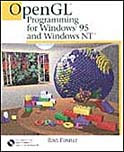
OpenGL Programming for Windows 95 and Windows NT
Buy through Amazon Using numerous examples, Microsoft's Visual C++ programming platform, the C++ programming language, and the Microsoft Foundation Classes, Fosner starts with a generic C application that can be compiled from any 32-bit C compiler and, step by step, covers the basics of creating an OpenGL program. It includes: Selecting the appropriate pixel format; Arranging the device context and rendering contexts; Enhancing OpenGL programs to achieve maximum speed; Using display lists and texture maps; Finding OpenGL enhancements hidden in your video driver; Programming OpenGL's Modelview matrix to get the effects you want; Providing rapid animation under Windows -- without bogging down the user interface.
Advanced Graphics Programming Using OpenGL
Buy through Amazon This book brings the graphics programmer beyond the basics and introduces them to advanced knowledge that is hard to obtain outside of an intensive CG work environment. The book is about graphics techniques that dont require esoteric hardware or custom graphics libraries, and that are written in a comprehensible style and do useful things. It covers graphics that are not covered well in your old graphics textbook. But it also goes further, teaching you how to apply those techniques in real world applications, filling real world needs. It emphasizes the algorithmic side of computer graphics, with a practical application focus, and provides usable techniques for real world problems. Includes: color and lighting; texture mapping; blending and compositing; antialiasing; image processing; special effects; natural phenomena; artistic and non-photorealistic techniques, and many others.
Delphi Developer's Guide to OpenGL
Buy through Amazon The Delphi Developer's Guide to OpenGL explains its capabilities, including how to use it inside Borland's popular programming language, Delphi.< The book begins with a tour of creating a Delphi project that can utilize OpenGL. Over the first five chapters, the book demonstrates how 3D graphics work using popular computer graphics nomenclature as well as instructions for drawing OpenGL objects in perspective within a Delphi window, and the implementation of the three different types of OpenGL lighting (ambient, specular, and diffuse) upon those objects. There are plenty of code snippets, and all the source code in the book can be found on the CD-ROM.
Programming OpenGL for the X Window System
Buy through Amazon This practical guide shows X programmers how to construct working 3D applications using OpenGL and how to tightly integrate OpenGL applications with the X Window System. It uses the OpenGL Utility Toolkit (GLUT) to show how OpenGL programs can be constructed quickly and explores OpenGL features using examples written with GLUT. Each chapter contains source code demonstrating the techniques described. Intended for C programmers familiar with the Xlib and/or Motif programming interfaces. No previous OpenGL knowledge is required.
Computer Graphics Using OpenGL (2nd Edition)
Buy through Amazon New edition of an introduction to computer graphics for students who wish to learn the basic principles and techniques of the field and want to write substantial graphics applications themselves. With an emphasis upon 3D computer graphics, Hill shows how to translate a particular design task first into its underlying geometric components, to find a suitable mathematical representation for the objects involved, and finally to translate this representation into suitable algorithms and program codes. Contains color and b&w; white illustrations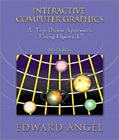
Interactive Computer Graphics: A Top-Down Approach with OpenGL (3rd Edition)
Buy through Amazon This book teaches beginners how to create interesting computer graphics. It takes a top-down approach that starts readers creating interesting computer graphics from the start using OpenGL. Interactive Computer Graphics, 3/e features a top-down, programming-oriented approach to computer graphics. Capitalizing upon this top-down and hands-on approach, the text quickly gets readers writing interesting 3D graphics programs. Angel uses OpenGL, a graphics library supported by most workstations, as well as the C and C++ programming languages, allowing readers to be aware of what is happening at the lowest levels of computer-graphics programming. This revision includes extensive 2-color art and graphics to bring important concepts to life. This book is ideal for programmers looking for a hands-on introduction to computer-graphics programming that allows them to start writing 3D graphics programs early on.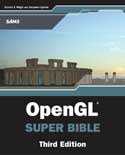
OpenGL SuperBible 3rd Edition
Buy through Amazon In a world where everything from how we take pictures to how we get our food is designed to happen as quickly and easily as possible, it can take a lot longer to learn how to make it all work behind the scenes. Theories and concepts can weigh you down when all you really want to know is how to create, design and go. That's where OpenGL SuperBible comes in. Complete with supporting figures and a CD packed with free tools, demos and libraries, OpenGL SuperBible simplifies 3D programming concepts without wasting your time with programming theory. Mac and Windows users will both find this comprehensive hands-on guide helpful as you learn to program for games, visualization applications and multi-platforms. This is the ultimate resource for any new programmer.Books about 3D graphics with OpenGL information/focus

Linux 3D Graphics Programming
Buy through Amazon Linux 3D Graphics Programming provides the reader, who has little or no 3D graphics experience, with a well-rounded understanding of the fundamental theoretical and practical concepts involved in programming real-time 3D graphics applications using freely available tools under Linux. Topics include the X Window System, OpenGL/Mesa, 2D screen access and rasterization, hardware acceleration, and 3D vision and perception. Other chapters discuss mathematical formulas to specify and project 3D points onto 2D planes, storing transformations in matrices, and using 3D polygons to model individual 3D objects and worlds. The CD contains a series of animated 3-D videos illustrating key 3-D graphics concepts.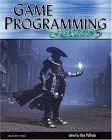
Game Programming Gems - Vol 1-5
Buy through Amazon With every new volume, the Game Programming Gems series continues to provide a road map through the vast array of development challenges facing today’s game programmers. With the wisdom of many industry experts, Gems 5 includes 62 newly unearthed gems that were polished up for your reading pleasure. These gems are filled with practical insights and techniques that will solve your current problems and help inspire future games. You and your team need to develop for today’s platforms, while preparing for the new technology looming on the horizon and with the tools provided here, you can! So dig into this new collection and put it to work.
GPU Gems 2 : Techniques for High-Performance Graphics & General-Purpose Computation
Buy through Amazon s GPUs find their way into mobile phones, handheld gaming devices, and consoles, GPU expertise is even more critical in today’s competitive environment. Real-time graphics programmers will discover the latest algorithms for creating advanced visual effects, strategies for managing complex scenes, and advanced image processing techniques. Readers will also learn new methods for using the substantial processing power of the GPU in other computationally intensive applications, such as scientific computing and finance. Twenty of the book’s forty-eight chapters are devoted to GPGPU programming, from basic concepts to advanced techniques.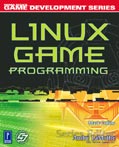
Linux Game Programming w/CD
Buy through Amazon Linux Game Programming features an overview of the game development cycle, as well as information on using tools and libraries, developing graphics applications, and adding extras such as sound.It covers all the APIs and methodologies you will need, as well as some more advanced techniques rarely discussed in other game development guides, such as neural networks and genetic algorithms. You will also find valuable information on 2D graphics using SDL, Xlib, and SVGAlib; 3D graphics using OpenGL; networking, lobbying, and threading; artificial intelligence and learning systems; genetic algorithms; and more.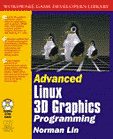
Advanced Linux 3D Graphics Programming (With CD-ROM)
Buy through Amazon This second volume in the series provides programmers who are experienced in both Linux and fundamental 3D graphics concepts with a well-rounded perspective on 3D theory and practice within the context of programming larger interactive 3D applications such as games. It covers such topics as texture and light mapping, creating compatible morph targets in Blender, creating and importing IK animations into a 3D engine, BSP trees (node and leaf based), portals, level editing, particle systems, collision detection, digital sound, content creation systems, and more. Examples are developed using free Linux tools and libraries (OpenGL/Mesa, gcc, Blender)
Non-Photorealistic Rendering
Buy through Amazon Many computer graphics researchers are exploring non-photorealistic rendering techniques as an alternative to realistic rendering. Defined by what it is not, non-photorealistic rendering brings art and science together, concentrating less on the process and more on communicating the content of an image. Techniques that have long been used by artists can be applied to computer graphics to emphasize subtle attributes, and to omit extraneous information. This book provides an overview of the published research on non-photorealistic rendering in order to categorize and distill the current research into a body of usable techniques. A summary of non-photorealistic rendering algorithms is included. Also includes pseudo code for hardware rendering method using OpenGL and lighting models with example OpenGL code using negative lights.
The Cg Tutorial: The Definitive Guide to Programmable Real-Time Graphics
Buy through Amazon Cg (C for graphics) is a complete programming environment for the fast creation of special effects and real-time cinematic quality experiences on multiple platforms for today's programmable GPU architectures. By providing a new level of abstraction, Cg lets developers more directly target OpenGL, Windows, Linux, Mac OS X, and console platforms, without having to program directly to the graphics hardware assembly language. Major topics covered include: 3D transformations; Per-vertex and per-pixel lighting; Skinning and key-frame interpolation; Environment mapping; Bump mapping; Fog; Performance optimization ; Projective texturing ; Cartoon shading; and Compositing. The accompanying CD-ROM includes the tools needed to run the sample programs in the book.
Real-Time Rendering (2nd Edition)
Buy through Amazon Building on the success of Real-Time Rendering, this completely revised and updated second edition addresses new developments in rendering realistic three-dimensional images in a fraction of a second. It discusses the latest graphics hardware capabilities, while also presenting theoretical underpinnings and algorithms of lasting value. The book contains chapters as diverse as: Transforms, Visual appearance, Acceleration algorithms, Advanced shading techniques, and Curved surfaces,Books about Open Inventor

The Inventor Toolmaker : Extending Open Inventor, Release 2
Buy through Amazon This guide takes the programmer one step beyond the material presented in The Inventor Mentor and explains how to create customized OpenInventor objects for special purposes. Using detailed examples and a step-by-step approach, this book is essential reading for anyone who wants to add new C++ classes to the OpenInventor toolkit.